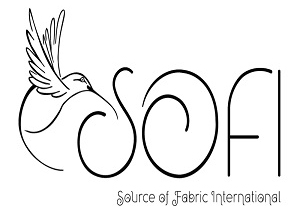Buying bolts of fabric wholesale can be a game changer for designers, crafters, and small business owners. It’s not just about saving money; it’s about accessing a wider variety of materials that can elevate any project. With the right approach, anyone can tap into the wholesale market and find high-quality fabrics at unbeatable prices.
Understanding the nuances of wholesale purchasing is essential. From identifying reliable suppliers to knowing the best times to buy, each step plays a crucial role in ensuring a successful purchase. This guide will walk through the key considerations and tips for navigating the wholesale fabric landscape, helping buyers make informed decisions and maximize their investment.
Understanding Wholesale Fabric Purchasing
Wholesale fabric purchasing presents a practical approach for designers, crafters, and small business owners. It offers cost savings and access to a broader range of materials. Knowing how to approach this market makes the buying process smoother and more efficient.
Benefits of Buying Bolts of Fabric Wholesale
- Cost Savings: Buying in bulk often leads to lower prices per yard. Savings can range from 20% to 50% compared to retail prices.
- Variety of Options: Wholesale suppliers usually provide a wide selection of fabrics, including specialty and seasonal materials. This variety supports unique projects and custom designs.
- Consistent Supply: Bulk purchases ensure a steady supply of fabric for ongoing projects. This helps avoid interruptions due to stock shortages.
- Relationship with Suppliers: Establishing relationships with wholesalers can lead to better deals and priority access to new stocks or limited items.
Common Misconceptions About Wholesale Purchasing
- Only for Large Businesses: Many believe wholesale buying is only for large companies. Small business owners and individual crafters can benefit equally from wholesale pricing.
- High Minimum Orders: Some assume high minimum order quantities limit participation. Many suppliers offer flexible options suitable for smaller buyers.
- Poor Quality: There’s a misconception that wholesale fabrics are of lesser quality. Many wholesalers carry high-quality materials that meet industry standards.
- Difficult to Find Suppliers: Many think finding reputable wholesalers is challenging. Numerous online and local resources simplify locating reliable suppliers.
Understanding these aspects helps individuals and businesses make better choices when purchasing fabric wholesale.
Choosing the Right Supplier
Choosing a fabric supplier significantly impacts the success of buying bolts of fabric wholesale. Reliable suppliers provide quality materials and trustworthy service.
Factors to Consider When Selecting a Supplier
- Pricing: Compare prices from different suppliers to find the best deals. Look for discounts and special offers.
- Quality: Examine fabric samples before placing bulk orders. Ensure the fabric meets project requirements.
- Selection: Choose suppliers with a wide variety of fabrics. A diverse inventory helps meet various design needs.
- Minimum Orders: Check if the supplier has minimum order requirements. Some suppliers may provide flexible options.
- Shipping: Review shipping policies and delivery times. Timely delivery supports project schedules.
- Customer Service: Consider the supplier’s reputation for customer service. Good support can aid in resolving issues quickly.
- Reviews: Read customer reviews and testimonials. Feedback from others provides insight into supplier reliability.
Top Wholesale Fabric Suppliers to Explore
- Fabric.com: Offers a wide selection and competitive pricing. Known for its vast inventory and frequent sales.
- Mood Fabrics: Popular for designer fabrics. Well-regarded within the fashion community.
- Alibaba: Connects buyers with international suppliers. Provides a range of fabrics at wholesale prices but requires careful vetting.
- Joann Fabrics: Provides a strong selection and frequent promotions. Ideal for crafters and small business owners.
- OnlineFabricStore.net: Focuses on customer service. Offers a diverse range of materials for various projects.
Assessing Quality and Pricing
Assessing quality and pricing is essential when buying bolts of fabric wholesale. Focus on knowing how to evaluate fabric quality and understanding pricing structures to make informed decisions.
How to Evaluate Fabric Quality
Evaluate fabric quality by checking several key factors. Look at the material type; natural fibers like cotton or linen often offer better durability than synthetic options. Examine the weight of the fabric, as heavier materials usually indicate higher quality. Feel the texture; soft fabrics generally signal good manufacturing. Review the colorfastness by wetting a small area and pressing it with a white cloth to check for color transfer. Lastly, inspect for flaws such as snags or uneven stitching that may compromise the fabric’s usability.
Understanding Pricing Structures in Wholesale Deals
Understand pricing structures in wholesale deals to ensure good value. Wholesale pricing often includes tiered rates, meaning the more fabric purchased, the lower the price per yard. Always inquire about bulk discounts or promotions available to maximize savings. Consider shipping costs as they can significantly affect the overall price. Compare the prices from different suppliers to find competitive offers. Lastly, factor in any additional fees like handling or import duties that may apply, especially when sourcing fabric from international suppliers.
Placing Your Order
Placing an order for bolts of fabric requires careful consideration and planning. The following steps focus on how to communicate effectively with your suppliers and ensure a seamless purchasing experience.
How to Negotiate with Suppliers
Negotiating with suppliers fosters better buying terms. Start by researching market prices for similar fabrics to create a strong base for negotiation. Approach suppliers confidently, expressing interest in bulk orders. Specify desired quantities and fabrics to demonstrate commitment. Don’t hesitate to ask for discounts based on order size or loyalty. Building rapport with suppliers enhances the chances of receiving favorable pricing and terms.
Tips for Ensuring a Smooth Transaction
Ensuring a smooth transaction involves clear communication and thorough preparation. Confirm details such as fabric specifications, pricing, and shipping costs before placing the order. Utilize written agreements or contracts for higher-value transactions. Specify delivery timelines and payment terms to avoid misunderstandings. Monitor the order status regularly to ensure timely updates. Invoices and receipts should be organized to streamline financial tracking. Establishing clear guidelines and expectations simplifies the entire purchasing process.
Managing Inventory
Managing inventory effectively is crucial for those buying bolts of fabric wholesale. It ensures a smooth operation and maximizes profit potential.
Best Practices for Storing Fabric
Storing fabric properly prevents damage and maintains quality.
- Keep Fabrics in a Cool, Dry Place: Avoid extreme temperatures or moisture, as these can cause deterioration.
- Use Shelves or Bins: Organize fabric by type or color, making it easy to find what’s needed.
- Maintain Proper Folding Techniques: Avoid creases by folding fabric neatly and using acid-free tissue paper in between layers.
- Protect from Sunlight: Store away from wholesale direct natural sunlight to prevent fading and discoloration.
- Label Each Bolt: Clearly labeling bolts helps track different fabrics and their specific qualities.
Tracking Your Wholesale Fabric Purchases
Tracking purchases helps maintain control over inventory levels and expenses.
- Use a Spreadsheet: Maintain a simple spreadsheet listing fabric types, quantities, prices, and suppliers for easy reference.
- Record Delivery Dates: Note when shipments arrive to keep track of stock levels and anticipate reorder points.
- Monitor Usage Rates: Regularly assess how quickly fabric is sold to adjust future orders and avoid overstocking.
- Keep Receipts and Invoices: Storing these documents aids in tracking expenses and verifying orders.
- Review Inventory Regularly: Conduct regular inventory checks to ensure current levels align with records and identify any discrepancies.
Implementing these practices helps manage fabric inventory more efficiently, ensuring a successful buying experience in the wholesale market.
Conclusion
Buying bolts of fabric wholesale opens up a world of opportunities for designers and crafters alike. By understanding the nuances of wholesale purchasing and establishing solid relationships with reliable suppliers, one can unlock significant savings and access a diverse range of materials.
Effective inventory management and tracking of purchases are essential for maximizing profits and ensuring smooth operations. With the right strategies in place, navigating the wholesale fabric market becomes a rewarding endeavor. Embracing these practices will not only enhance creativity but also lead to sustainable business growth.
Frequently Asked Questions
What are the benefits of buying fabric wholesale?
Buying fabric wholesale offers significant cost savings, often ranging from 20% to 50% compared to retail prices. It also provides access to a wider variety of materials, ensures a consistent supply for projects, and allows buyers to build relationships with suppliers for better deals.
Who can benefit from buying fabric wholesale?
Designers, crafters, and small business owners can all benefit from buying fabric wholesale. It’s not just for large companies; anyone looking to save money and access diverse materials can take advantage of wholesale purchasing.
How do I find reliable wholesale fabric suppliers?
To find reliable wholesale fabric suppliers, consider factors such as pricing, quality, selection, minimum order requirements, shipping policies, customer service, and online reviews. Research is key, and checking supplier ratings can help you make informed decisions.
What should I know about wholesale purchasing?
Understanding wholesale purchasing involves knowing the minimum order quantities, quality considerations, and pricing structures. It’s essential to evaluate suppliers and negotiate terms to ensure you’re getting the best deals.
How can I assess fabric quality when buying wholesale?
Assess fabric quality by examining the material types, weight, texture, colorfastness, and spotting any potential flaws. Asking for samples before ordering or purchasing smaller quantities can also help evaluate quality in person.
What are some top wholesale fabric suppliers?
Some top wholesale fabric suppliers include Fabric.com, Mood Fabrics, Alibaba, Joann Fabrics, and OnlineFabricStore.net. Each supplier has unique offerings that cater to different needs and preferences.
How do I place orders for bolts of fabric?
To place orders for bolts of fabric, research market prices and negotiate with suppliers. Confirm details like specifications, shipping costs, and maintain written agreements for larger orders to ensure transparency.
What are best practices for managing fabric inventory?
Best practices for managing fabric inventory include storing fabric in a cool, dry place, organizing it by type or color, labeling each bolt, and conducting regular inventory checks to maintain an accurate record.
Why is tracking wholesale fabric purchases important?
Tracking wholesale fabric purchases is essential for controlling inventory levels and managing expenses. Keeping an organized spreadsheet of fabric types, quantities, prices, and suppliers helps ensure accuracy and makes inventory management easier.
How can I ensure a smooth transaction when buying wholesale?
To ensure a smooth wholesale transaction, confirm all order details, maintain clear communication with the supplier, utilize written agreements, and keep organized financial records. This minimizes the chances of misunderstandings or issues arising.


